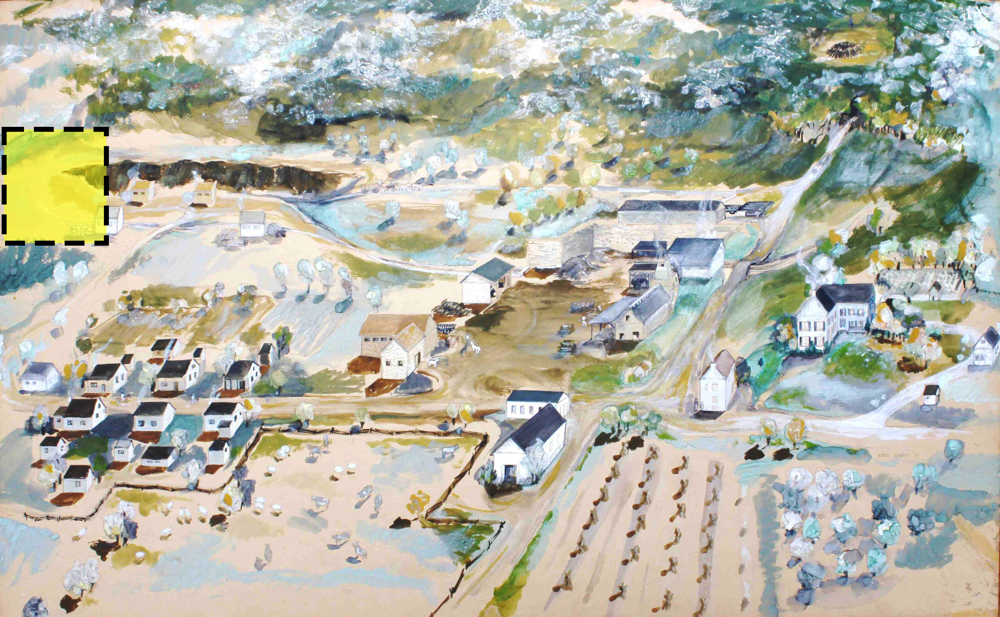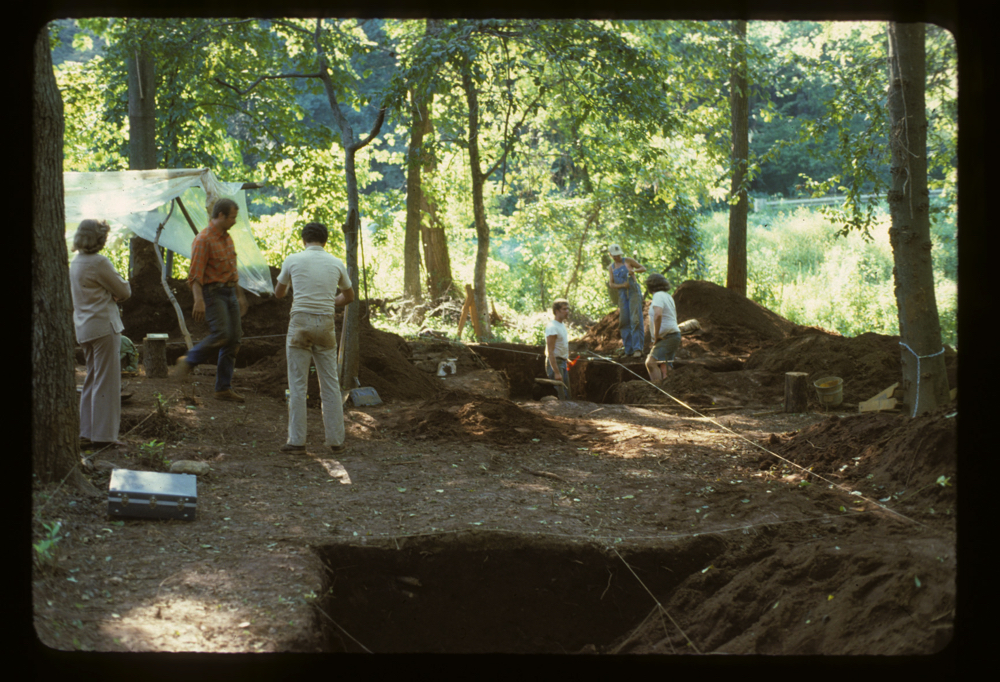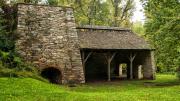A genetic analysis of African Americans who labored at a Revolutionary War-era forge for the first time connects ancient DNA to living people who have shared their data in a genealogical database. Researchers used techniques originally developed for analyzing DNA that is tens of thousands of years old to develop genetic profiles of 27 individuals who had been buried in the late eighteenth and early nineteenth century at Catoctin Furnace in Maryland, and then linked them to more than 41,799 living relatives in the United States: customers of personal ancestry and health firm 23andMe who had agreed to share their genetic information. At a time of rising national interest in the legacy of American slavery—including Harvard’s own examination of its past—the research may spark new conversations about these emotional and increasingly politicized subjects.
“Recovering African American individuals’ direct genetic connections to ancestors heretofore buried in the slave past is a giant leap forward both scientifically and genealogically, opening new possibilities for those passionate about the search for their own family roots,” said Fletcher University Professor Henry Louis “Skip” Gates Jr. in a statement released by Harvard Medical School (HMS). Gates, who is director of Harvard’s Hutchins Center for African & African American Research and a coauthor of the paper, is the host of the popular genealogy and genetics television show Finding Your Roots.
When comparing the retrieved DNA to that in the contemporary anonymized database, the researchers found that the highest concentration of close relatives is in Maryland, suggesting that “descendants of the Catoctin individuals remain in the area.” More than 271 enslaved people labored at Catoctin Furnace, which supplied munitions to George Washington’s Continental Army during the Revolutionary War. In 1780, for example, the forge delivered 31 tons of 10-inch bombshells, many of which were used in the siege of Yorktown a year later. To produce iron, the enslaved and an unknown number of free African Americans mined ore, cut wood, and labored as: colliers, who transformed the wood into charcoal to fuel the furnace; teamsters, who hauled charcoal and ore; and fillers, who dumped charcoal, ore, and limestone (used as flux) into the tunnel that led into the blast furnace. Others may have worked at domestic and agricultural tasks in the furnace owners’ households and plantations.
Tracing African American family lineages to ancestors who died before the 1870 census, in which all black people were listed by name for the first time, is notoriously difficult. At Catoctin Furnace in 1979, planning for a state roadway had unearthed skeletal remains at what was identified as an African American cemetery that had been in use at the Forge prior to 1850. Archaeologists documented the site, and the state of Maryland turned the bones over to the Smithsonian Institution.


Top: Painting of village ca. 1820 (prior to construction of a church in 1828). Highlighted in yellow, the location of the African American cemetery; Bottom: 1979 excavation
From top: Map courtesy of Kris Smith; photograph courtesy of Mid-Atlantic Archaeological Research
More recently, the Catoctin Furnace Historical Society, in partnership with the African American Resources Cultural and Heritage Society of Frederick County, Maryland, has been trying to learn more about the enslaved and free African Americans who worked at the forge from about 1776 until the mid-1800s. Through genealogical research, they successfully identified two living families with links to African American workers.
To learn more, they turned to genetic analysis, which has now revealed family relationships among the burials at the Catoctin African American cemetery, the geographic origins of their ancestors, and the presence of a large community of relatives in the United States. “This study” said coauthor Elizabeth Comer of the historical society in the statement provided by HMS, “represents a step toward meeting our ultimate goal of identifying a Catoctin descendant community using DNA and other tools.”
The research was led by Éadaoin Harney, a Harvard lecturer on human evolutionary biology and population geneticist at 23andMe whose doctoral work was overseen jointly by professor of organismic and evolutionary biology John Wakeley and paper senior author David Reich. Reich, a Howard Hughes Medical Institute investigator and a professor of genetics and of human evolutionary biology, is well-known for having developed efficient methods for analyzing ancient human DNA, including that of early humans such as Neanderthals and Denisovans. The other lead authors are Joanna Mountain, formerly senior director of research at 23andMe, and anthropologist Douglas Owsley of the Smithsonian Institution.
The genetic comparison used a new method developed by a team led by Harney and Reich to compare segments of DNA that are shared by two or more people because they have been “inherited by descent”(IBD) from a common ancestor. The greater the number of these IBD segments of DNA, the more likely the individuals are to be closely related.
Of the 41,799 U.S.-based research participants genetically related to the Catoctin Furnace individuals, 2,975 are thought to be close relatives, meaning their relatedness ranges from five degrees of separation—the same amount as a great-great-great-grandchild—to about nine degrees, or the equivalent of first cousins six times removed. The rest appear to be distant relatives who may be connected to Catoctin individuals through shared ancestors who lived in Africa or Europe during or before the transatlantic slave trade.
Most of the Catoctin individuals, the genetic analysis found, derived their African ancestry from the Wolof and Mandinka ethnolinguistic groups of West Africa or the Kongo of Central Africa, and their European DNA from Great Britain and Ireland. While all but one of the Catoctin group derive the vast majority of their ancestry from Africa, the European signal is most evident on the Y sex chromosome in male individuals. This chromosome is passed exclusively from men to their male children, and the fact that the European signal is strongest in this part of the genome is evidence of the sexual exploitation of enslaved African American women by their European American owners.
The genetic analysis of the burials also revealed that 15 of the Catoctin individuals could be grouped into five families—mostly mothers, children, and siblings buried near each other. Several of them carried a gene variant that confers protection against malaria when one copy is present, but causes a debilitating and life-threatening blood disorder called sickle cell anemia if two copies are inherited, one from each parent. The disorder is common among African Americans whose ancestors lived in areas where malaria is endemic.
“Methodologically,” Gates said, “this work represents a step forward for enabling further study of the biogeographic origins and genetic legacy of historical African American populations, particularly in cases where documentation is limited, as is common.”
More broadly, the study demonstrates the possibility of connecting historical or ancient DNA from other sources with personal genome databases to better understand human history.
The work clearly could have implications for Harvard’s (and other institutions’) legacy of slavery studies, Reich acknowledged in an email—if the institutions are interested in pursuing such work (read about efforts to trace descendants of people who were once enslaved by Harvard leaders and faculty and staff members). Not all groups embrace such genetic studies, he explained. At a seminar he led last year at Radcliffe to explore the use of ancient DNA to help repatriate the remains of Native Americans to their descendants, most of the participants, he reports, seemed unfavorable to the idea. “But the situation might be very different for African American remains, as the African American community is very much interested historically in trying to use genetics to recover lost roots and connect them to present people, as exemplified by Skip Gates’s work.”









